Evolution of an Audiophile(-lite)
My journey building a home stereo and plans for the future
Typically, I don’t like to get into heavy specifics about my personal system as it tends to invite both elitist feedback and complaints about unrealistic costs and or showing off. However, in order to really have any sort of ‘authority’ to provide guides and suggestions for building a system of your own, I do think it is important for me to be transparent about my journey and current system today. I don’t claim to be the biggest expert in audio, but I’ve spent half of my life researching and building a system, so I do have plenty of information to share that can save time and money.
My system is in constant flux — though quite a bit less volatile these days — so there may be updates to this post in the future to keep it up-to-date. Please keep in mind that my system is the result of years of research, saving, trading/selling up to upgrade, buying used (sometimes), and continuous tinkering, so while yes it would be rather expensive to purchase my current system at retail right at once, that isn’t realistically how I did it or how I would even recommend approaching it. I would not be able to afford my own system at retail price without many, many years of saving again.
Also, I never recommend copying someone’s system piece for piece as everyone has their own individual preferences. The best way to find gear you like is to listen to as much of it as possible, and in your own space when possible.
This post will detail the evolution of my home system from humble beginnings through today. For those uninterested in audio gear, I might recommend skipping this post. My next post later this week will be another Japanese jazz feature, so stay tuned for some more music!
The Beginning
As I mentioned in my previous post, I grew up surrounded by home audio systems which were a big motivating factor in building one of my own. My first system as a teenager after getting my first job was an old Audio Technica TT (the LP120, I believe), a vintage Kenwood KR-4400 receiver, and some Pioneer HPM-100s (at the time, I was able to find a pair near-pristine for $200, but that absolutely won’t happen today).
Fast forward a few years and I shifted to a Sansui AU-717/TU-717 stack and Music Hall MMF-7 (now 7.3), all purchased used locally and mostly via Craigslist. Anyone that has ever tried finding something specific on a marketplace like that knows that it took a lot of watching, waiting, and setting money aside to pounce when something popped up. The Kenwood was fine, but at 25 WPC, it lacked the power needed to really make the HPM-100s sound good. The Sansui at 85 WPC was quite a bit more capable.
A few years later after hearing a wonderful tube amplifier in a hifi shop, I decided to sell off my Sansui equipment for a healthy profit and pick up a (used) Primaluna Prologue 2. Around the same time, I sold my HPM-100s and switched over to Tannoy DC6Ts — I bought these off the showroom floor as demo models for a significant discount. This was around the time when I was starting to amass quite a bit of jazz, and the Tannoys and Primaluna handled the music with a lot more refinement.
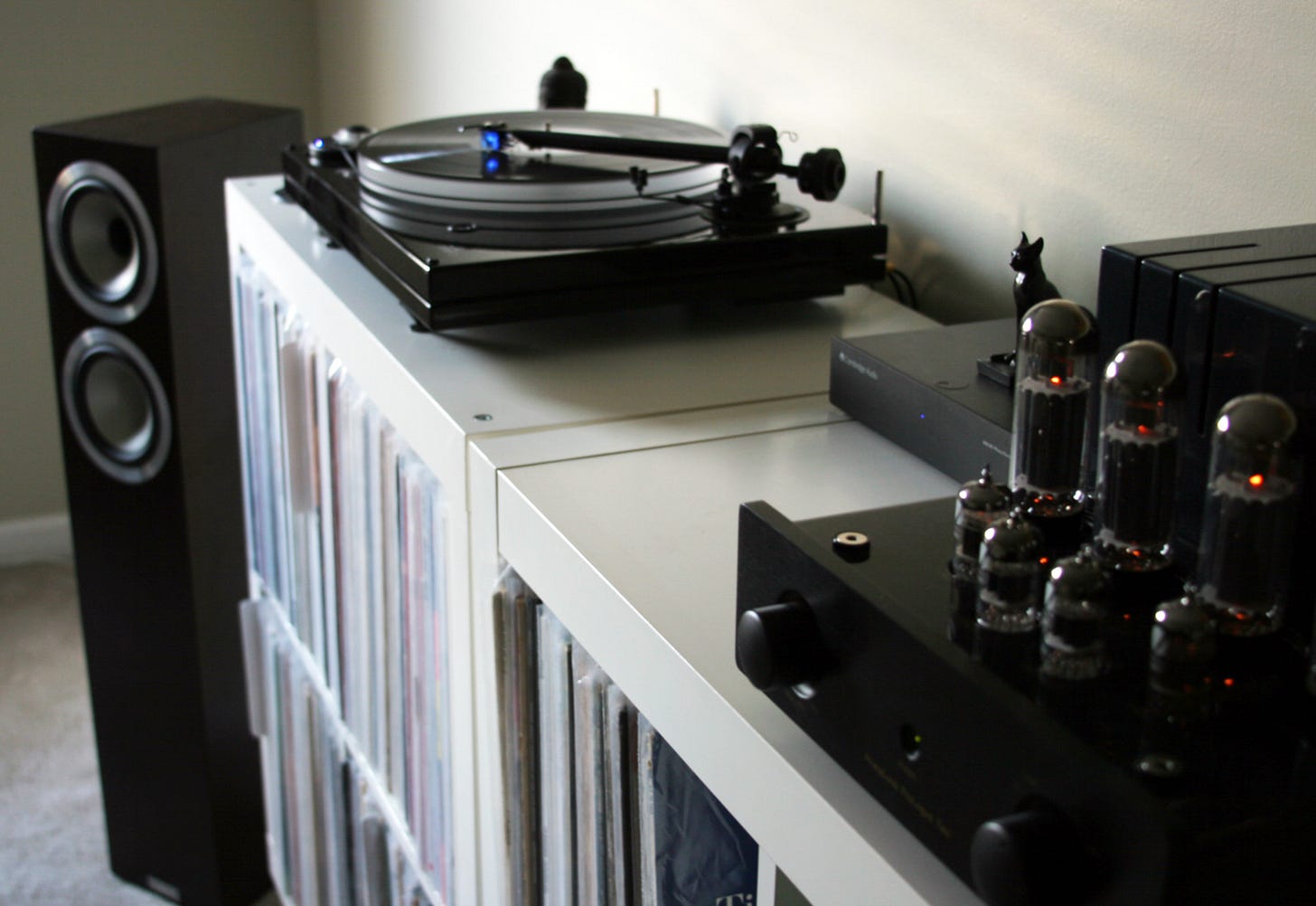
At this point, I was a few thousand dollars (roughly $3-4,000) into my system, though spread over quite a few years and rolled up via selling/trading other gear. This is an approach I still use today, made easier by multiple new platforms, such as US Audio Mart and Audiogon.
More or less, this stayed my system for quite a few years, as I only replaced the phono preamp with the Musical Surroundings Phonomena II (now II+). Eventually, I ended up taking a job across the country and made the decision to sell everything and start over from scratch — which I came to regret.
Rebuilding
Shortly after my move the COVID-19 pandemic hit in full-force, so my pursuit of home audio was put on pause for over a year. Eventually, when I was ready to start putting a system together again, I picked up a Clearaudio Concept MC turntable, Vincent Audio SV-237MK hybrid integrated amp, Musical Surroundings Phonomena II+ phono preamp, and a pair of Tannoy XT-8F speakers (that I found used on Craigslist for a steal). The Clearaudio was fantastic! They have since updated their lineup and there isn’t a direct comparison to that table anymore since the entry-level Air model does not offer the MC cartridge as an option, unfortunately.

This combination was surprisingly good for a bit of a rag-tag thrown together setup, though it was a considerable price jump from my previous system, even with purchasing the speakers used — effectively doubling my investment. This setup was specifically designed to be simple and easy (and easy enough to resell later) as I had plans to eventually upgrade to a more substantial system. Even today, the Phonomena II+ is a fantastic adjustable phono preamplifier for the money and an excellent option for someone just getting their first moving coil cartridge as it can handle various loading configurations with ease.
Final-ish Upgrades
The past two years have ushered in a complete transformation of my system, thanks to long-term saving and liquidating my system to upgrade, starting with the turntable. For well over a decade, the Michell Orbe/Orbe SE has been one of my dream record players, but was comfortably out of reach. In early 2023, a friend who had two home systems decided to downsize to just one, and offered me their Orbe SE at a ridiculously good price. I couldn’t say no.
While the player came with the wonderful Graham 2.2 tonearm installed, it did not come with a cartridge, so after doing some research, I picked up a brand new Hana ML cartridge — a superb mid-tier moving coil cartridge that punches well above its weight.
Shortly after receiving the record player, I traded my Clearaudio Concept and Musical Surroundings Phonomena II+ in toward a Modwright PH9.0X phonostage, which I settled on after quite a bit of research and an in-home demo (courtesy of TweekGeek). This combined with the new turntable, tonearm, and cartridge made a drastic improvement in overall sound quality and detail retrieval.
Mid-2024, I ended up sending the power supply back to Modwright to have the ‘T’ upgrade done, which added tube rectification to the power supply, also picking up the upgraded umbilical power cord at the same time.
Later that year, I made the decision to take the plunge into streaming as I did not want to be totally restricted in my listening to just records. I managed to source a gently used Innuos Zen MK3 for near half-off retail and picked up the Denafrips Pontus II 15th DAC and Denafrips Iris DDC from Vinshine (who is no longer carrying the Denafrips line). These did not last very long, however, since just a few months later I was offered a friend’s Allnic D5000 DHT DAC — a near $12,000 DAC when new — for a complete steal, so it quickly replaced the Denafrips gear after an in-home demo confirmed it’s superiority.
Next, I decided to look into power filters & power conditioners for two reasons. First, I wanted to replace the messy power strip I was using, and second, I wanted something that would help reduce the noise floor a bit. The biggest feature I ended up coveting was finding a model that would not decrease amplifier performance when plugged into it. After trying a few models, I settled on the Saturn Audio 103C mkII power filter. They offered a wonderful full-refund period (less shipping), so I felt comfortable purchasing since I could return easily if it didn’t work out. Upon getting it set up in my system, there was an immediate drop in the noise floor without sacrificing any sound quality. It took less than an hour to confirm my decision.
Near the end of 2023, I was finally ready for my large upgrades — speakers and pre-amplifier/amplifier. For both of these, I went with small artisan custom-made options.
Starting with the speakers, I decided on the Coherent audio 18s, finished in Santos Rosewood veneer. These speakers are quite large, featuring 18” custom manufactured coaxial drivers and are rated for high efficiency, great for use with low powered amplifiers. Frank was incredibly patient and helpful throughout the entire process, which took a few months from start to finish, including shipping from Canada via pallet. Frank owns and operates Coherent himself as a solo venture, hand building each set of speakers. He is quite passionate about what he does, is happy to answer any questions, and is helpful post-sale if anything comes up. When I wanted to adjust the crossover, he helped walk me through what I needed to do to tweak it a bit to my liking.
Around the same time, I reached out to Aric Kimball of Aric audio to order a super 6SN7 linestage and super 2A3 amplifier. Aric makes all of his equipment by hand with many choices for wood finishing. He can also customize things within reason (such as making a 2A3 amplifier compatible with 45 tubes). He has a bit of a wait list, but I happened to have good timing and only had about a month wait before he began working on my items. These days, his wait list can be up to a year. Since I went with efficient loudspeakers, I wanted to revisit tubes (recall my old Primaluna amp), but this time I wanted to do tubes the ‘right way’ (joking) and go with a SET amp (single-ended triode).
After some debate, I had to make a choice between 300B and 2A3, ultimately going with the latter due to it’s more natural sound versus the sometimes too lush 300Bs. I opted for walnut wood for the enclosures, and asked for him to alter the lighting to white light instead of the blue that is standard. After final tweaks, he was off to the build for about a month.
While waiting on my amplifiers and speakers to be built, I worked on getting a full set of cabling from Triode Wire Labs, but I won’t go into much detail with that since cabling tends to be controversial at best.
With all of this new gear, the next challenge was finding a stand to hold all of it. This proved more difficult than I anticipated, with custom quotes approaching five figures, which was well beyond my budget. Fortunately, I was referred to a custom builder in Oregon with experience building HiFi racks for other audiophiles — Woodseer Building. He worked with me to build a custom solid walnut rack with isolated shelving to the exact specifications I wanted for a very reasonable cost.
After months of waiting and receiving everything mid-2024, I was finally able to assemble my entire system together as I envisioned years prior. Looking at before and after pictures can be a bit shocking — even now — considering how drastic the change was in just a year and a half or so.
Looking Forward
While things have mostly settled in my system for the time being, there are some things I am considering for the future. Since phono cartridges have limited life, I will need to look into a new one in the next year or so. I’m currently considering upgrading to the Hana Umami Red. Staying within the same line will grant a significant discount against a new cartridge with a trade in of an old one (even if no longer usable), so this is probably the most economical way to go. While it would still be a fairly expensive upgrade, when factored out to a per hour cost of playback, it’s still quite low overall.
I am also considering changing out the DAC model for something different. While the Allnic D5000 is stellar, it does have some shortcomings that make it a bit of a pain. The DHT tubes it utilizes burn out fairly quickly and can be a bit irritating to track down as they are no longer produced; the ‘best sound’ is via coaxial input while my streamer only outputs to USB; the upsampling capabilities are now quite old and don’t hold a candle to new innovations. Eventually when I get to the point of considering options, I have my eye on a few things to try to demo.
For now, I’m pleased to be at a point where I don’t feel like I really need to do very much else. To hear much noticeable improvement in sound at this point, I would need to spend exponentially more money. In the future, I plan on moving my system to a dedicated room with sound treatment, though this is some years off.
For a full and updated list of all components, including specific tubes, cables, and tweaks, please visit my virtual system on Audiogon. I keep this updated as I make any adjustments or changes and serves as a bit of a ‘system journal.’
Most of my purchases and upgrades were done after long hours researching and talking with other owners about their experiences on forums like Audiogon, reading formal reviews and actually listening to things in person. I am thankful to have been able to demo a few things in-home prior to committing to buy (or with a full-refund return period), which is ideally the absolute best way to go. Unfortunately, a lot of building a system can be trial and error since there are many variables at play that can influence the sound. All the more satisfying once everything clicks into place.


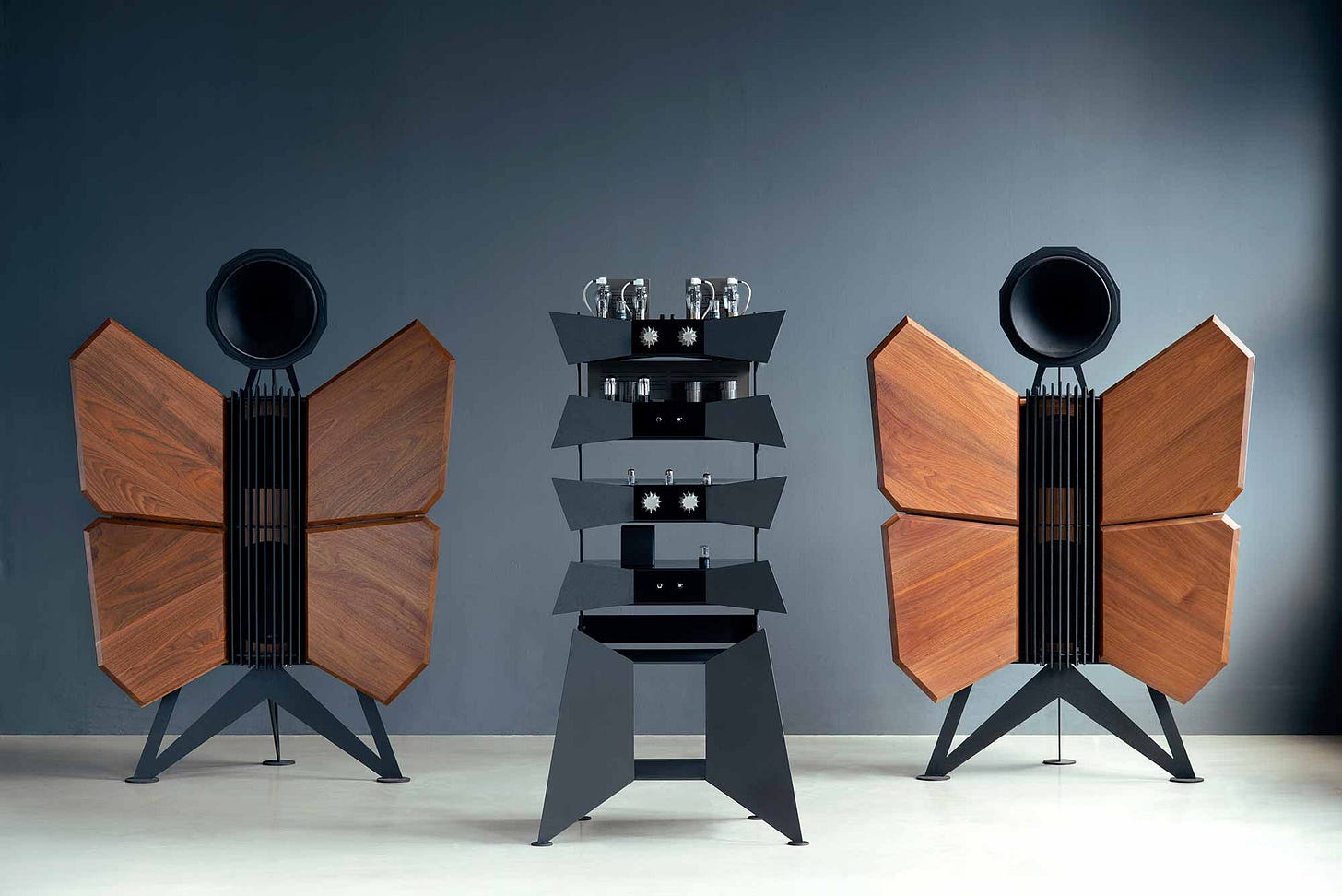
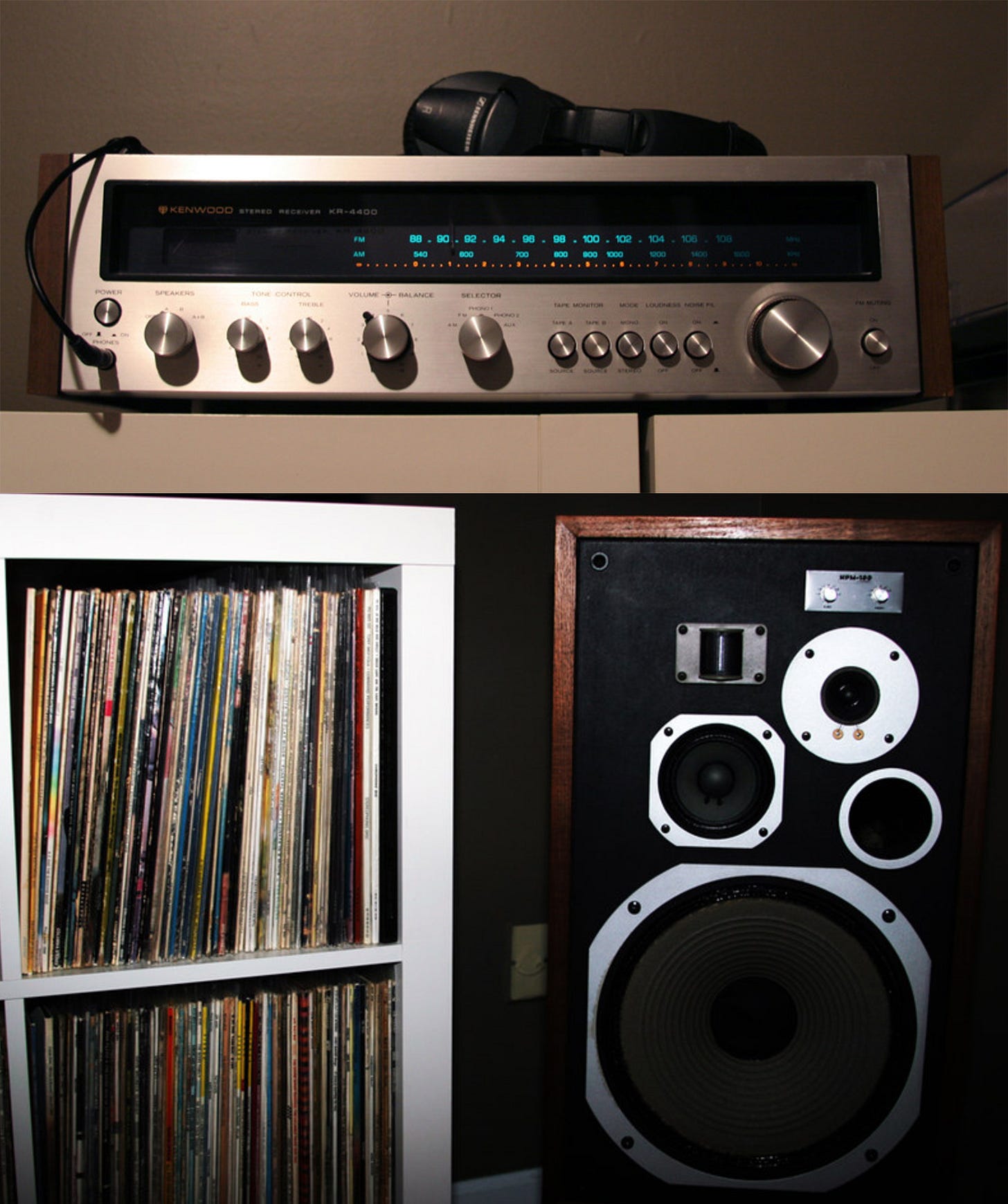

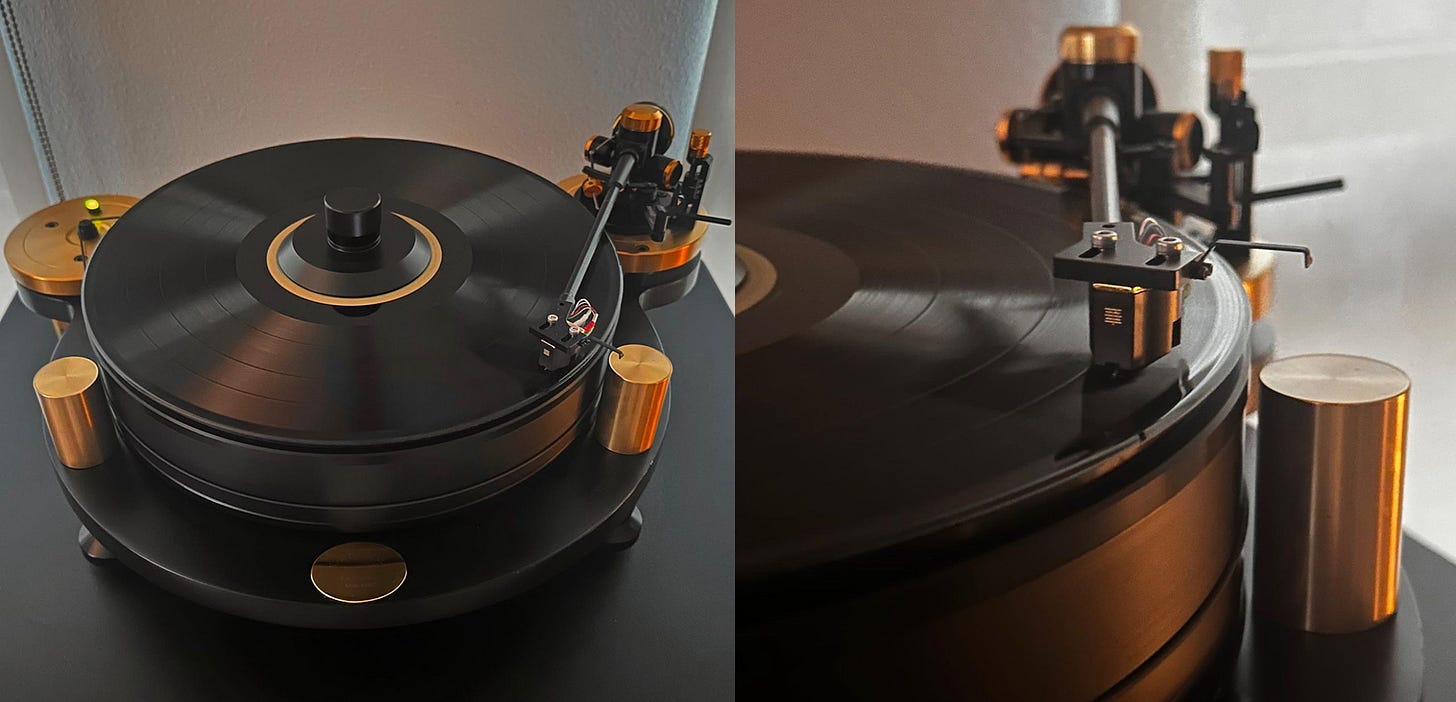
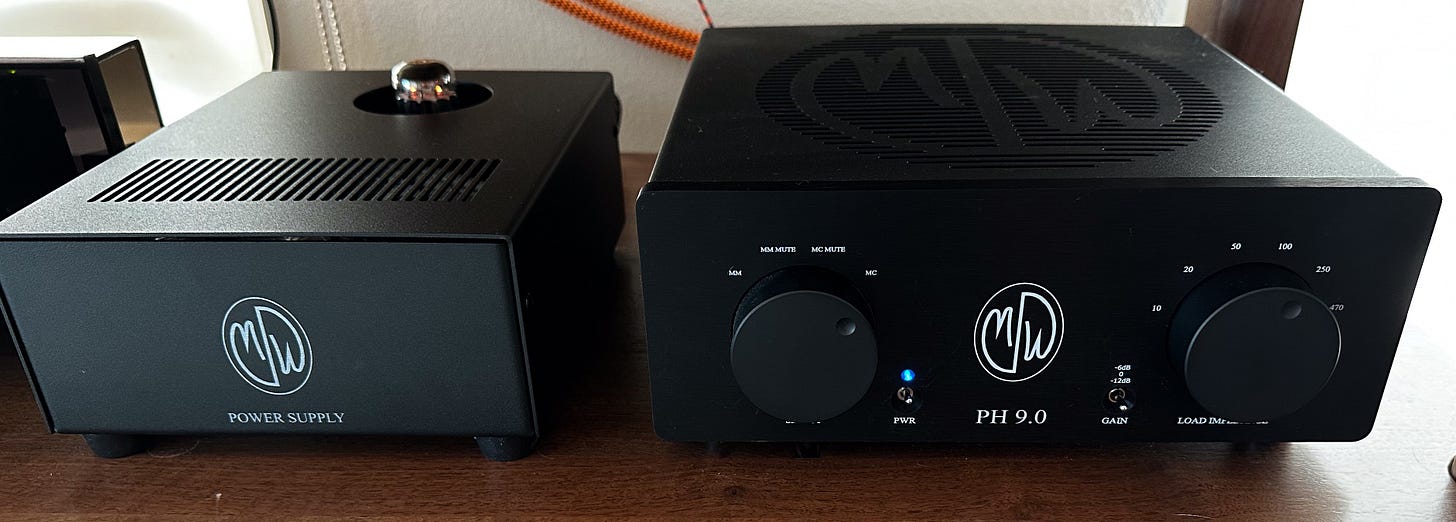
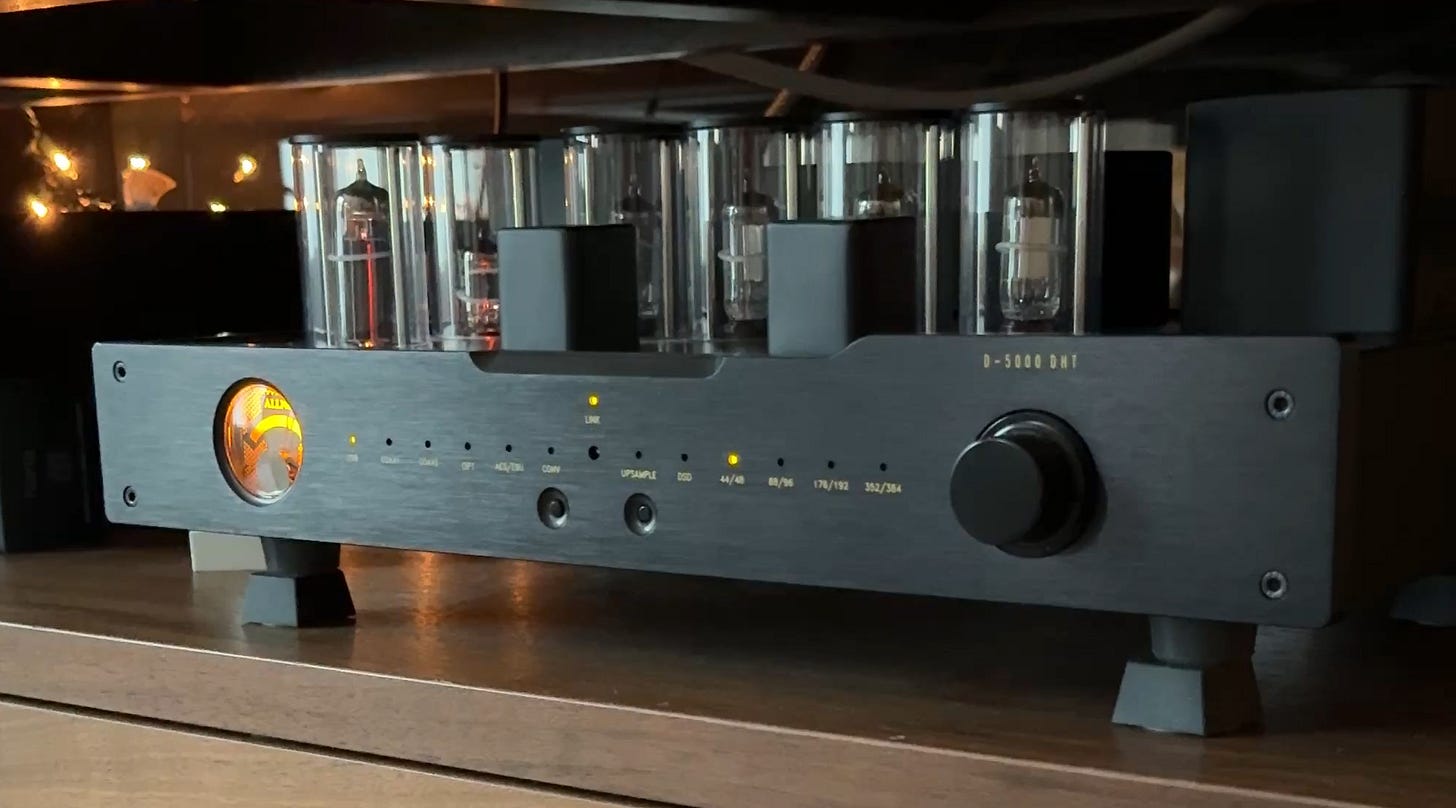
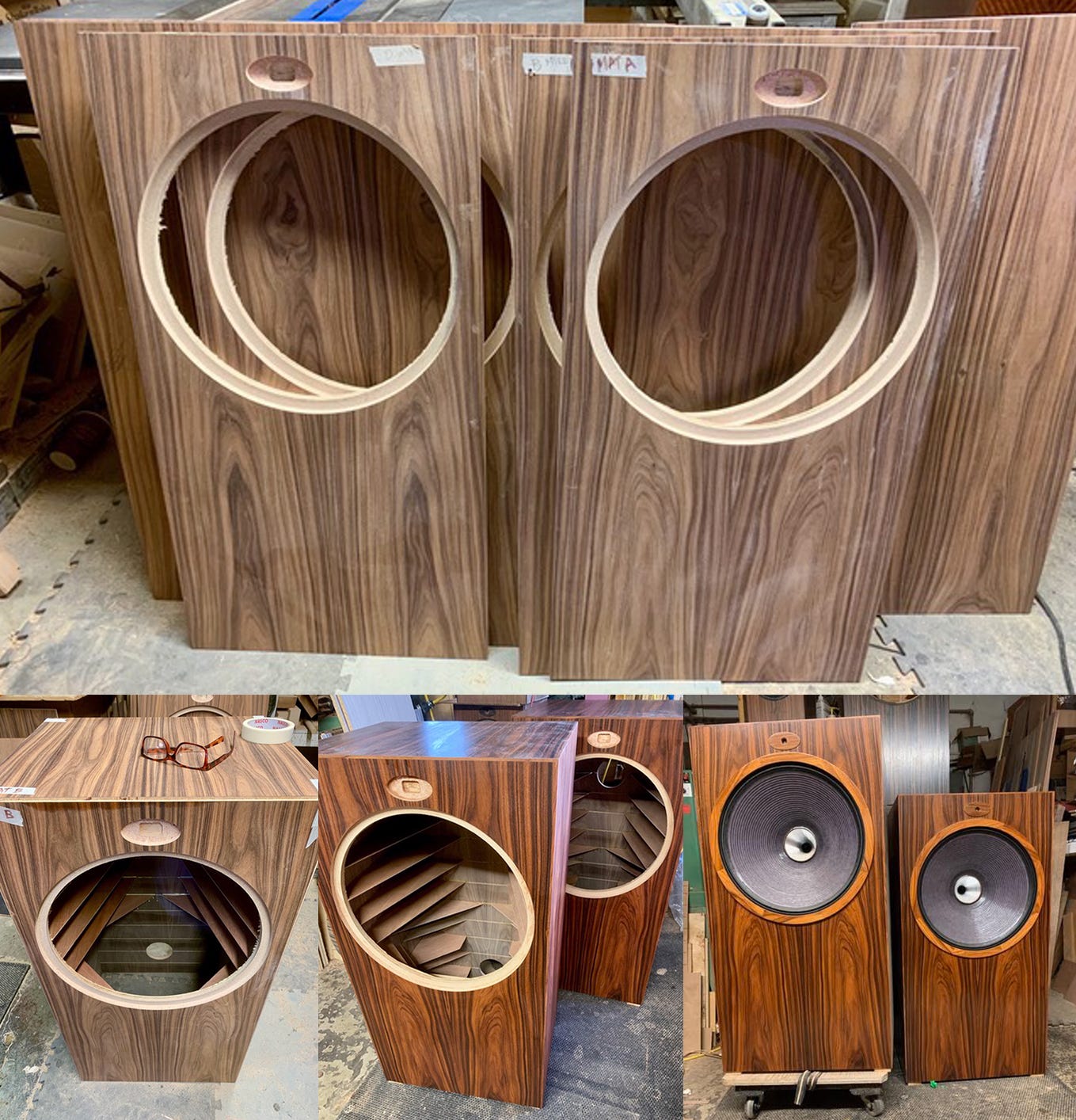
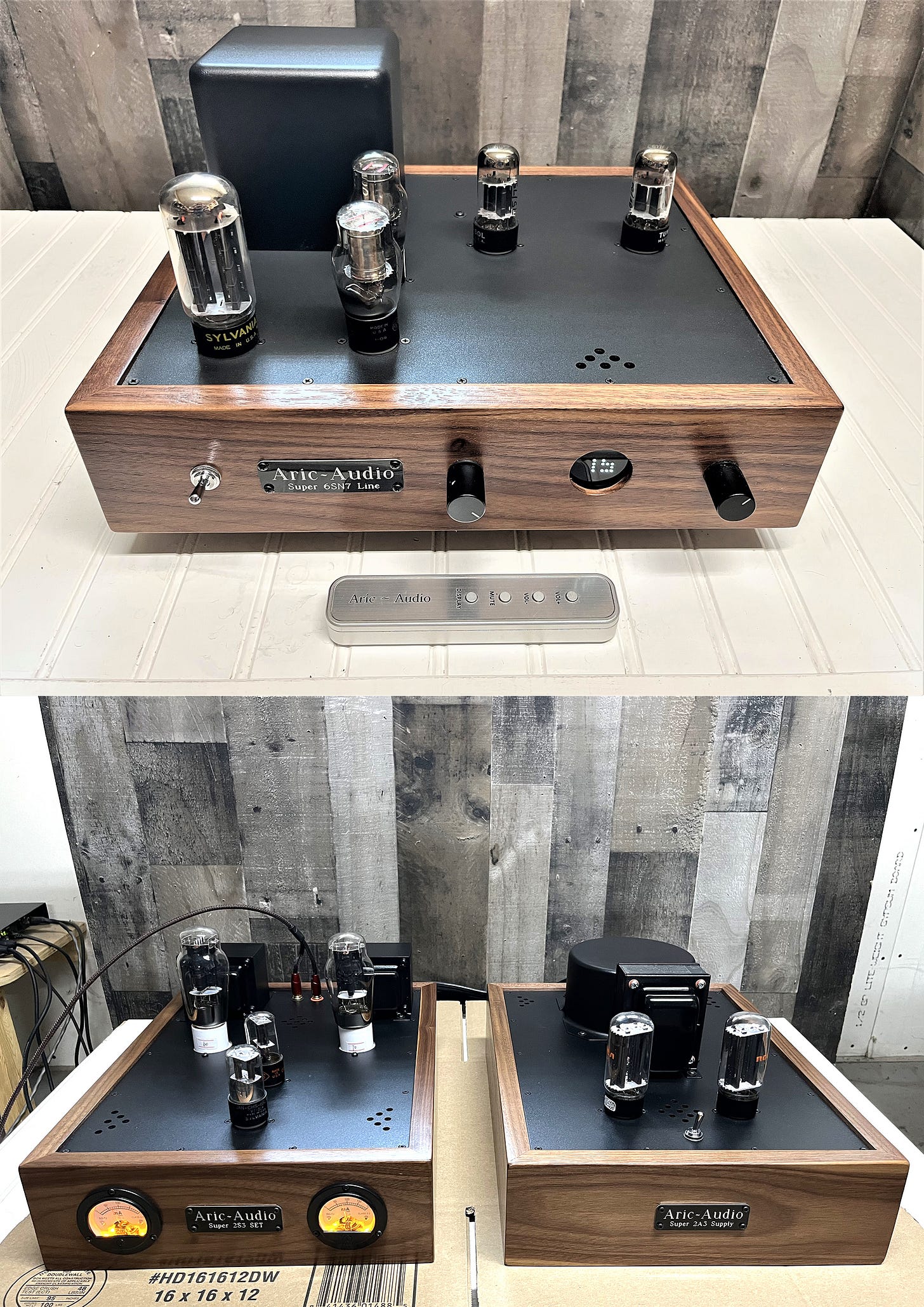
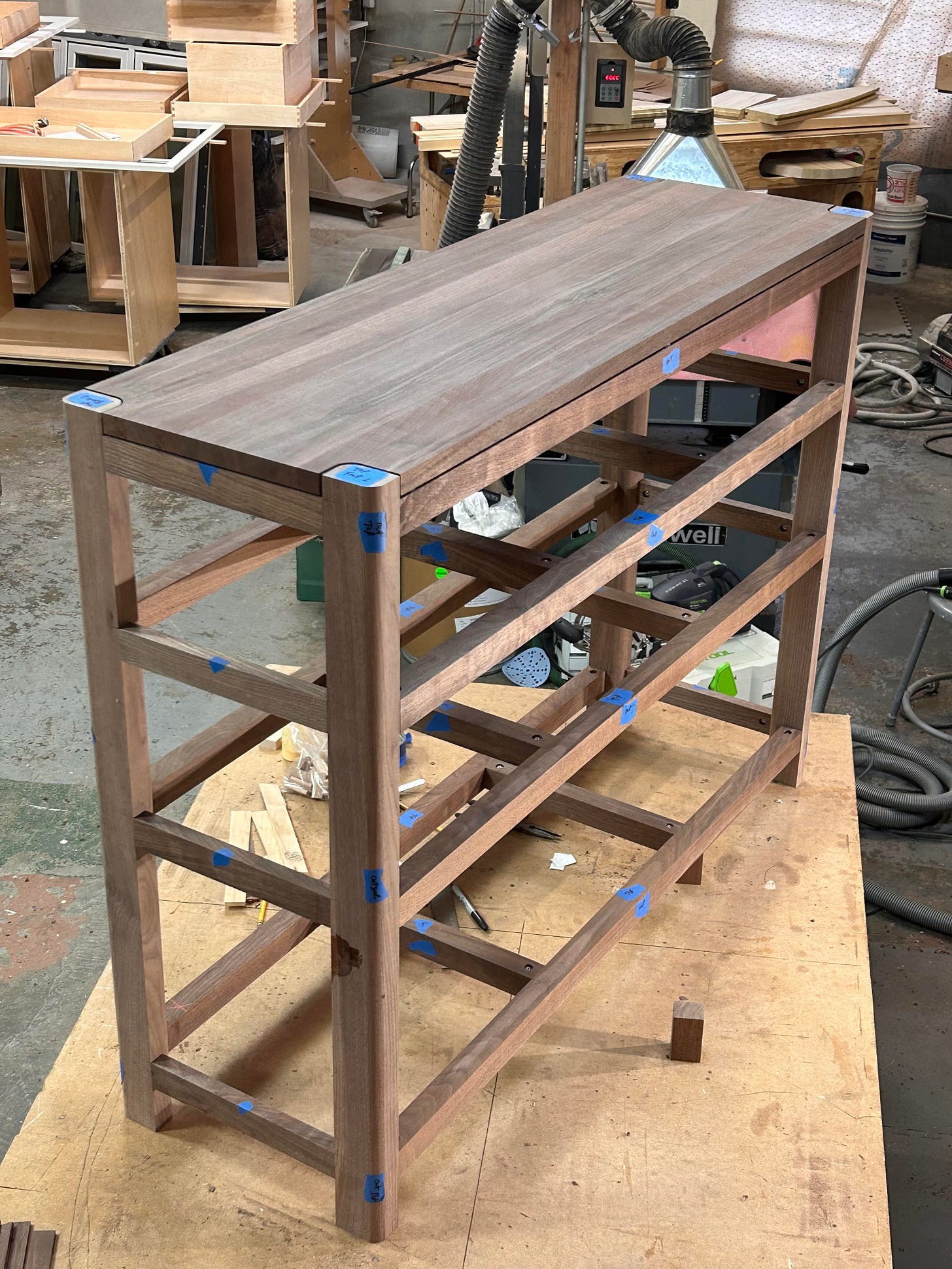

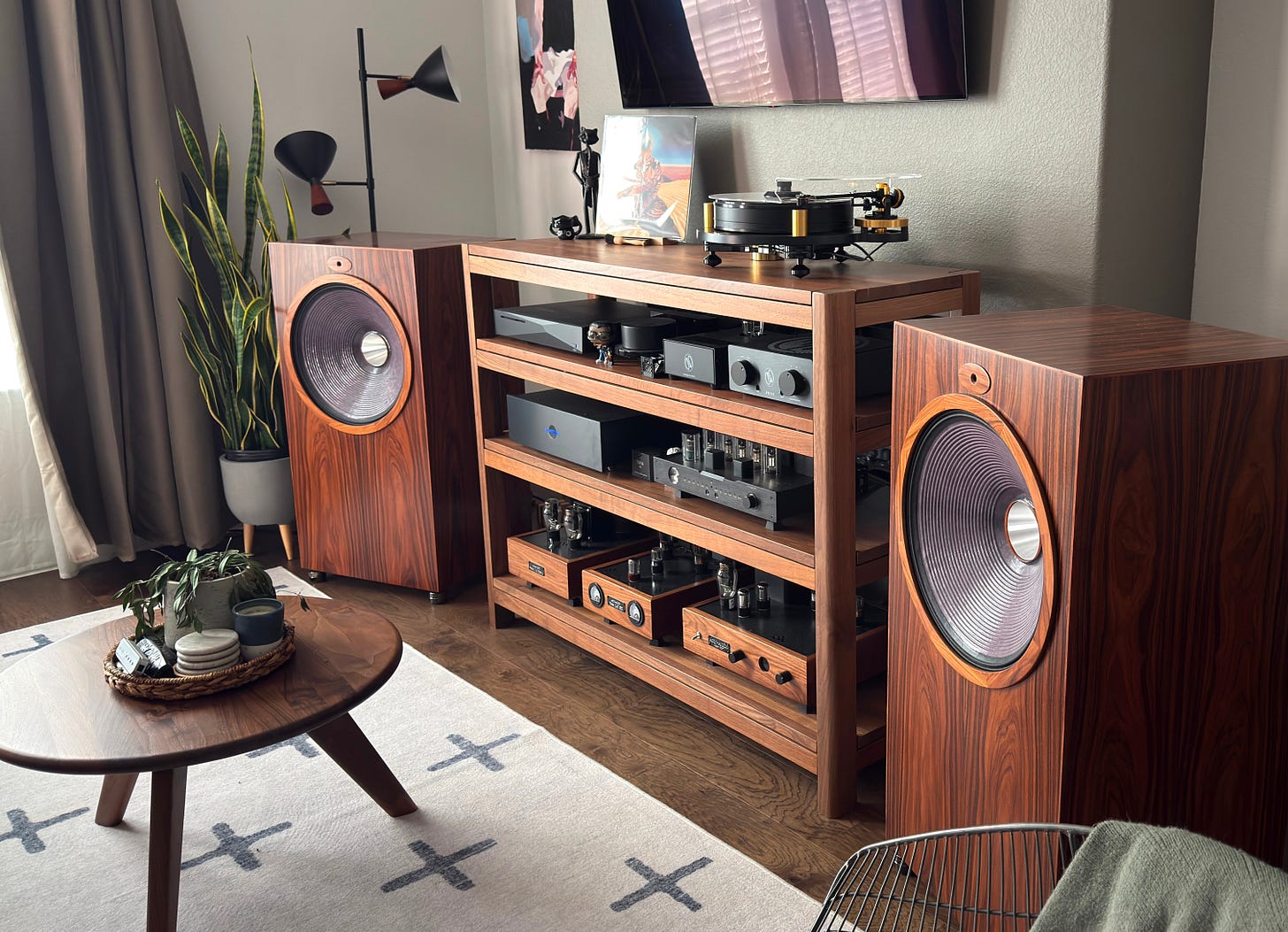
Not familiar with the speakers. Every speaker is the sum of design compromises, but I have a bias against horns or coaxial speakers with the tweeter at the apex of the woofer cone. The nearh field reflections produce audible spatial artifacts. Perhaps with careful design and choice of woofer cone materials, the problems can be minimized.
Happy listening. Remember, it's about the music.
This is fun